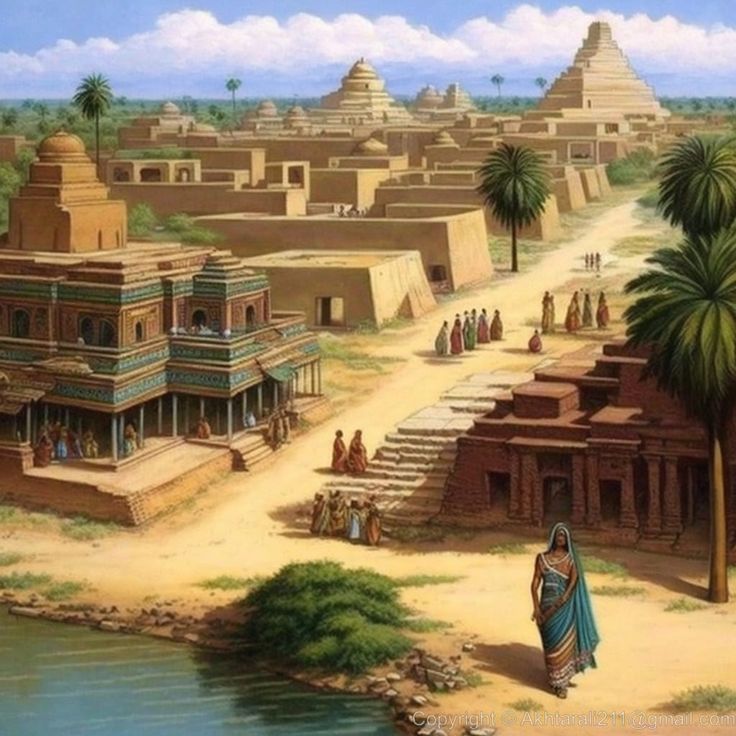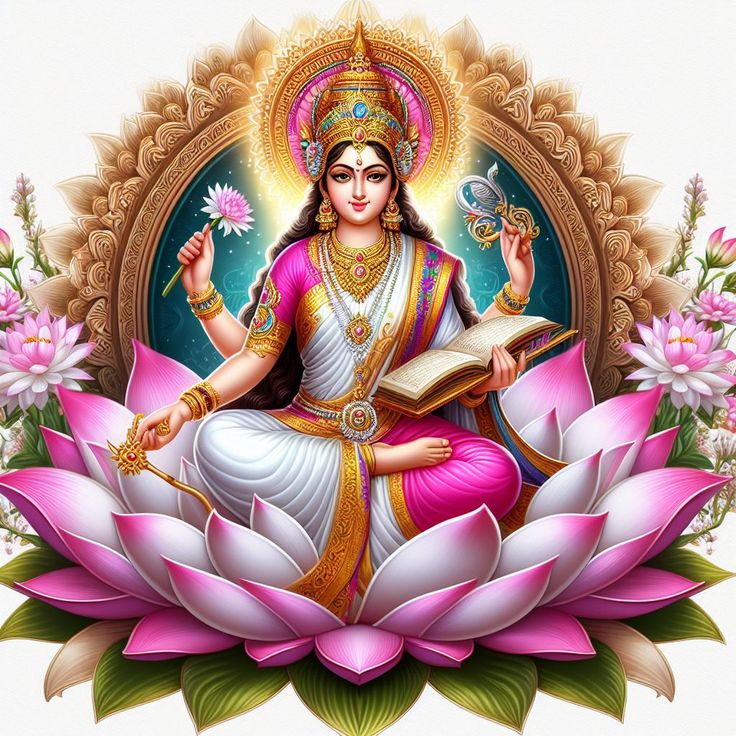Saraswati River : Saraswati’s Association in Ancient Texts
Introduction
Within India’s ancient texts and cultural legacy, the Saraswati River is revered and magical. Celebrated as both a physical river and a heavenly presence, this holy waterway has grabbed the imagination of academics, archaeologists, and believers both separately. Beginning in the revered Vedas and working through the epic Mahabharata, the narrative of the Saraswati River is entwined with the very fabric of India’s spiritual and historical tapestry.
The Vedic Reverence for Saraswati
The oldest of the Vedic books, the Rig Veda, first notes the Saraswati River. Described as the “Best of Mothers, Best of Rivers, Best of Goddesses,” the Saraswati is revered especially within these old hymns. The Yajurveda goes into more detail on the river’s divine qualities, showing it as the junction of five holy tributaries: Drishadvati, Shatudri (Sutlej), Chandrabhaga (Chenab), Vipasa (Beas), and Iravati (Ravi).
Through songs stressing the Saraswati’s life-giving waters, the Atharvaveda honors the compassion of the Saraswati and extolles its part in agricultural success. Beyond the Vedas, this respect for the Saraswati River finds expression in other ancient writings such the Manusmriti, Mahabharata, and Puranas.
The mythological relevance of Saraswati
Hindu mythology regards the Saraswati River as a symbol of knowledge, intelligence, and the arts as well as a physical entity. Often shown with a veena—a musical instrument—in one hand and a book in the other, Saraswati, the goddess of learning, symbolizes her control over the material and spiritual spheres of human endeavor.
According to the Mahabharata, important events in the epic’s story took place beside the great Saraswati River. After eradicating bad sinners on Earth, Parashuram, the sixth avatar of Lord Vishnu, reportedly took a pious bath in the Saraswati. Moreover, Bhima is said to have thrown a big boulder into the river to help the Pandavas, the heroes of the Mahabharata, pass the Saraswati on their way to Swargaloka, the celestial residence.

The Saraswati River’s Changing Path
The Vedic books offer a rich tapestry of descriptions of the Saraswati River, showing it as a strong, snow-fed river running across the northwest of the Indian subcontinence. But as the Vedic books advance, the Saraswati’s image changes; subsequent books like the Mahabharata describe its slow drying out and final vanishing in a desert area called Vinasana.
Archaeological and geological data point to the Saraswati River possibly changing course several times throughout the millennia, causing human communities to move along its banks. The Puranas, who characterise the Saraswati as an underground, unseen river joining the Ganga and Yamuna at the Triveni Sangam in Prayagraj, help to further reinforce this dynamic character of the river.
Modern Research and Search for the Saraswati
With scholars from many fields adding to the conversation, the continuous search to solve the riddle of the Saraswati River has attracted major interest in recent years. Compelling proof supporting the historical presence of a perennial, snow-fed Saraswati River has come from geological surveys, sedimentological studies, and hydrological investigations.
Consistent with the expected route of the Saraswati, which is thought to have stretched from the Himalayas to the Rann of Kutch in Gujarat, satellite imaging and remote sensing techniques have found paleochannels and dry river beds. Further supporting the river’s historical importance are excavations along this suggested route revealing relics of ancient communities, pottery shards, and infrastructure going back to the Bronze Age and Harappan civilization.

The Saraswati, the Indus-Saraswati Civilization
Many academics have reinterpreted the story of the Indus Valley Civilization—now known as the Indus-Saraswati Civilization—based on the finding of these archeological riches. This updated nomenclature recognizes the vital part the Saraswati River played in the flowering of this ancient civilization, which lived along the banks of this great river between 8000 and 5000 years ago.
With its complex infrastructure, advanced urban planning, and vast trading networks, the Indus-Saraswati Civilization is evidence of the civilizing legacy the Saraswati River promotes. The river’s drying out and eventual disappearance could have helped this once-prosperous civilization gradually fade, causing human communities to move toward the Ganga-Yamuna basin.
The Subterranean Existence of Saraswati
Apart from the physical expression of the Saraswati River, Hindu tradition holds that the river exists in a subterranean, invisible form always. At the Triveni Sangam near Prayagraj, the Puranas depict the Saraswati as an underground river joining with the Ganga and Yamuna.
With hydrological investigations and groundwater analysis exposing underlying aquifers and water channels consistent with the river’s historical path, this idea of the Saraswati’s subterranean route has been the topic of continuous scientific inquiry. Many people have been enthralled with the concept of the Saraswati as an undersea river system, which drives the hunt for this elusive and mysterious stream.

The Saraswati’s Continuum of Legacy
Whether the Saraswati River exists now in its physical form or has really evolved into an invisible, subterranean entity, its imprint is nevertheless profoundly felt in the spiritual and cultural fabric of India. The river’s importance goes beyond the physical world since it is connected with the goddess Saraswati, the personification of education, art, and culture, therefore guaranteeing its relevance.
Celebrated celebrations of the Saraswati include Vasant Panchami, when people honor the goddess, seek her blessings for knowledge, and participate in instructional activities. This ongoing respect for the Saraswati, as a river and as a symbol of knowledge, emphasizes the great influence this mysterious waterway has had on the Indian subcontinent’s shared psyche.
Conclusion
Whether in physical or spiritual form, the narrative of the Saraswati River never fails to enthrall academics, archaeologists, and devotees both. The Saraswati is evidence of the continuing force of myth, folklore, and the human yearning for knowledge of the past even as the hunt for the vestiges of the river and exploration of its subterranean route continues.
From the prism of the Saraswati, we see the complex tapestry of India’s rich cultural legacy where the physical and the spiritual live in harmony. The river’s continuing heritage reminds us that the Saraswati’s actual nature is not only physical but also in the wisdom, knowledge, and creative expression it has inspired throughout millennia.
#saraswati #river #nadi #story #saraswatiriver







